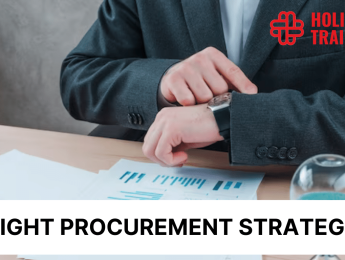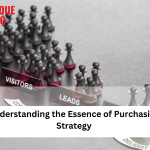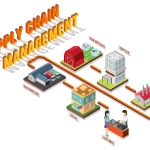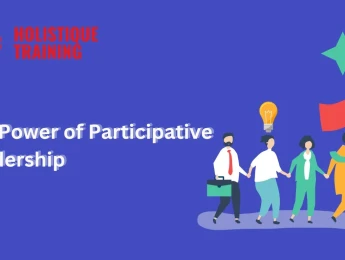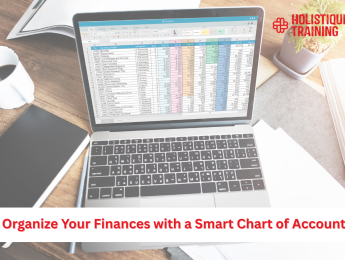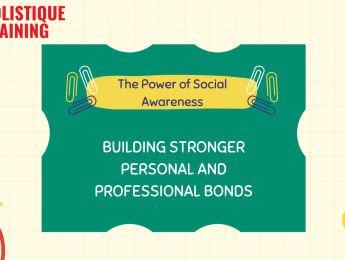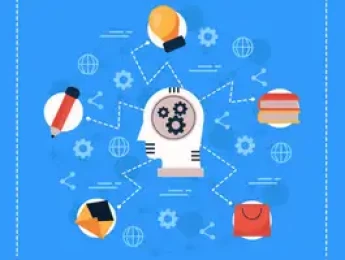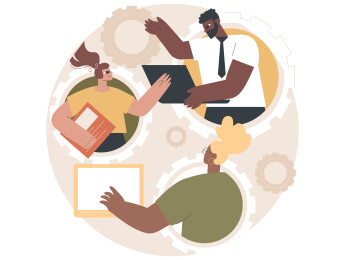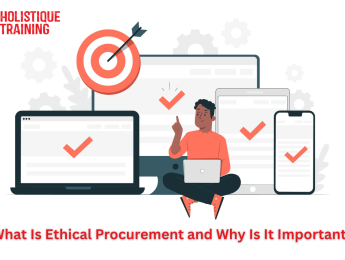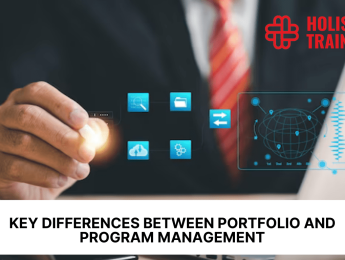Introduction
Procurement is an indispensable function within organisations, encompassing a wide range of processes aimed at acquiring goods and services from external suppliers. Its significance spans across industries and is pivotal in ensuring the seamless operation of businesses. To truly harness its potential, it's essential to grasp the nuances of the various types of procurement. By doing so, organisations can optimise efficiency, reduce costs, and strategically align their objectives. In this comprehensive guide, we will delve deep into the world of procurement. We'll explore the concept of procurement, dissect the intricacies of indirect procurement, thoroughly examine the three primary types of procurement, discuss their respective benefits, and guide you in determining which procurement type best suits your business needs.
Table 1: A Comparison of Procurement Types
What Is Procurement?
At its core, procurement entails the acquisition of goods and services from external suppliers. This multifaceted process involves several crucial activities, including identifying organisational needs, sourcing suitable suppliers, negotiating contracts, managing supplier relationships, and ensuring timely delivery. The effective management of procurement operations can significantly enhance operational efficiency, lead to cost reductions, mitigate risks, and drive overall value for the organisation.
What Is Indirect Procurement?
Indirect procurement, often referred to as non-production or overhead procurement, revolves around the acquisition of goods and services that are not directly involved in the production process. These purchases are essential for supporting day-to-day operations and are categorised as indirect expenses. Examples of items falling under indirect procurement include office supplies, IT equipment, facility maintenance services, marketing services, and travel arrangements.
The Three Primary Types of Procurement
Traditional Procurement
Traditional procurement, also known as direct procurement, is primarily concerned with the acquisition of goods and services that are directly utilised in the production process or for the delivery of specific projects. This type of procurement encompasses the sourcing of raw materials, components, machinery, equipment, and specialised services required for manufacturing or construction activities.
The process of traditional procurement follows a linear path, commencing with the identification of requirements and culminating in contract management throughout the project or product lifecycle. This approach necessitates long-term planning, meticulous vendor selection, and rigorous quality control measures to guarantee the timely delivery of high-quality goods and services.
Table 2: Key Elements of Traditional Procurement
Aspect | Description |
Focus | Direct goods and services for production |
Process | Linear process with clear stages |
Key Activities | Identify requirements, market research, bids, contracts |
Vendor Selection | Careful vendor selection and quality control |
Key Benefit | Enhanced quality control |
Strategic Procurement
Strategic procurement takes a more holistic approach by aligning procurement activities with the overarching strategic goals and objectives of the organisation. It entails the development of long-term relationships with key suppliers, with the aim of maximising value creation, fostering innovation, and gaining a competitive advantage.
Unlike traditional procurement, strategic procurement transcends the transactional aspects of purchasing and emphasises collaboration, supplier development, risk management, and sustainability. This approach centres on selecting suppliers based on their capabilities, reliability, and potential for forming enduring partnerships. By establishing strong relationships with suppliers, organisations can tap into their expertise, enhance product quality, optimise costs, and drive innovation.
Table 3: Key Elements of Strategic Procurement
Aspect | Description |
Focus | Align with organisational strategic goals |
Process | Emphasises long-term relationships and collaboration |
Key Activities | Supplier collaboration, innovation, risk management |
Vendor Selection | Suppliers chosen based on capabilities and reliability |
Key Benefit | Improved supplier collaboration |
Public Procurement
Public procurement pertains to the procurement activities conducted by government agencies or public sector organisations. It encompasses the acquisition of goods, services, and works for public projects, infrastructure development, public services, and various government initiatives.
The processes involved in public procurement are subject to specific regulations and guidelines designed to ensure transparency, fair competition, equal opportunities, and value for public funds. These processes typically include tendering, bidding, and evaluation procedures to select the most suitable supplier. Public procurement plays a pivotal role in driving economic growth, promoting social development, and achieving public policy objectives.
Table 4: Key Elements of Public Procurement
Aspect | Description |
Focus | Goods, services, and works for public projects |
Process | Highly regulated and transparent |
Key Activities | Tendering, bidding, evaluation |
Vendor Selection | Selection based on regulatory compliance |
Key Benefit | Economic development and social impact |
The Benefits of Each Type of Procurement
Benefits of Traditional Procurement
- Enhanced Quality Control: Traditional procurement offers an unparalleled level of control over the quality of materials and services acquired. Organisations can meticulously specify their requirements and monitor the manufacturing or service delivery process closely. This level of oversight is particularly crucial for industries where product quality and reliability are paramount, such as aerospace, automotive, and pharmaceuticals.
- Cost Optimisation: Through the negotiation of contracts, bulk purchasing, and rigorous evaluation of suppliers, traditional procurement facilitates effective cost management. Organisations can leverage their purchasing power to secure favourable terms and pricing. Moreover, a competitive bidding process can lead to cost savings, which is vital for industries with slim profit margins.
- Supply Chain Reliability: Traditional procurement necessitates the careful selection of suppliers and the establishment of robust relationships. This ensures a steady and reliable supply of materials. Industries that rely on just-in-time manufacturing or operate in volatile markets, such as electronics and fashion, benefit significantly from this reliability, as it minimises the risk of production disruptions.
- Long-Term Partnerships: While traditional procurement may not emphasise supplier collaboration to the same extent as strategic procurement, it can still lead to the development of long-term partnerships. Suppliers who consistently deliver high-quality products and services may become trusted allies in an organisation's supply chain, further enhancing reliability and product consistency.
- Advanced Quality Control Techniques: Some organisations within the traditional procurement sphere have adopted advanced quality control techniques, such as Six Sigma and Total Quality Management (TQM), to further enhance product quality and reduce defects. These methodologies can result in continuous improvement and cost reductions over time.
Benefits of Strategic Procurement
- Improved Supplier Collaboration: One of the hallmark benefits of strategic procurement is the emphasis on developing long-term, collaborative relationships with suppliers. This collaboration extends beyond transactions and fosters an environment where suppliers are viewed as strategic partners. Such partnerships enable joint problem-solving, innovation, and continuous improvement. For example, in the automotive industry, strategic suppliers often work closely with manufacturers to co-develop cutting-edge technologies and reduce time-to-market.
- Risk Mitigation: In a rapidly changing global market, risk management is a paramount concern. Strategic procurement addresses this by diversifying the supplier base and building redundancy into the supply chain. This approach helps organisations mitigate risks associated with supply chain disruptions, price volatility, geopolitical instability, and changing market conditions. For instance, a pharmaceutical company might strategically source raw materials from multiple suppliers to ensure a steady supply even in the face of unforeseen challenges.
- Value Creation Beyond Cost Savings: While cost savings remain a core objective, strategic procurement aims to create value beyond the bottom line. By leveraging supplier expertise and fostering innovation, organisations can enhance product or service differentiation. For instance, a technology company may collaborate with suppliers to incorporate cutting-edge components into their products, giving them a competitive edge in the market.
- Sustainability Integration: Strategic procurement often incorporates sustainability criteria into supplier selection. This aligns with the growing societal and regulatory focus on sustainability. Organisations that adopt sustainable procurement practices can reduce their environmental footprint, enhance their reputation, and attract environmentally conscious customers.
- Market Expansion: Strategic procurement can also open doors to new markets and opportunities. Suppliers with a global presence can provide insights into international markets, helping organisations expand their reach. For instance, a clothing retailer partnering with a strategic supplier with international manufacturing capabilities can explore new markets for expansion.
Benefits of Public Procurement
- Transparency and Accountability: Public procurement processes are designed to be transparent and accountable. This ensures that taxpayers' funds are allocated fairly and efficiently. Transparency in procurement builds trust in government initiatives, fostering public confidence in the use of public resources.
- Economic Development: Public procurement can be a powerful tool for stimulating economic growth. Government contracts can provide a lifeline to local businesses, creating jobs and promoting innovation. For instance, a government investment in infrastructure projects can spur economic development in a region, benefiting various industries.
- Social and Environmental Impact: Leveraging public procurement can drive positive social and environmental change. Governments can prioritise the inclusion of sustainable and socially responsible practices in their procurement decisions. For example, a government agency may opt to source renewable energy solutions, thereby contributing to environmental goals and fostering the growth of the renewable energy sector.
- Innovation through Public-Private Partnerships (PPPs): Public procurement often involves partnerships with private sector entities. These Public-Private Partnerships (PPPs) can lead to innovations that benefit both the public and private sectors. For example, a PPP in healthcare might lead to the development of cutting-edge medical technologies that improve patient care and generate revenue for private companies.
- Infrastructure Development: Public procurement plays a pivotal role in building and maintaining critical infrastructure such as roads, bridges, and utilities. These investments not only enhance the quality of life for citizens but also create employment opportunities and stimulate economic activity in the construction and related sectors. The development of infrastructure has far-reaching impacts, ranging from improved transportation networks that facilitate the movement of goods and people to the provision of essential services like clean water and efficient energy distribution. Public procurement ensures that these vital projects are executed efficiently and to the highest quality standards, ultimately contributing to the overall well-being and prosperity of the communities they serve.
Which Procurement Type Best Suits Your Business?
Determining the most suitable procurement type for your business hinges on a variety of factors, including your industry, organisational goals, product or service requirements, and available resources. Here are some considerations to help you make an informed decision:
1- Assess Your Procurement Needs
Start by analysing your organisation's requirements and identifying the types of goods and services you need to procure. Consider whether these items are directly related to production or are geared more towards supporting operational activities. This assessment will help determine whether traditional or indirect procurement is more suitable.
2- Evaluate Your Strategic Goals
Align your procurement strategy with your overall business objectives. If your priorities include innovation, sustainability, and supplier collaboration, strategic procurement may be the most appropriate choice. Consider the long-term impact on your organisation's growth and competitiveness.
3- Understand Market Dynamics
Evaluate the nature of the market for the goods and services you require. Take into account factors such as supplier availability, competition, price volatility, and regulatory requirements. This analysis will assist in determining the procurement approach that best suits your business's specific needs.
4- Evaluate Your Resources
Assess your organisation's capabilities, resources, and expertise in managing procurement activities. Determine whether you have the necessary skills and capacity to implement strategic procurement effectively. If not, a more traditional approach might be better suited to your current capabilities.
In short, the choice of procurement type is not one-size-fits-all. It must align with your specific organisational needs, strategic direction, market realities, and available resources. By carefully considering these factors and conducting a comprehensive evaluation, you can make an informed decision that optimises your procurement practices and contributes to your long-term success.
Emerging Trends in Procurement
The field of procurement is constantly evolving, driven by technological advancements, changing market dynamics, and evolving consumer expectations. Staying ahead of emerging trends is crucial for organisations looking to maintain a competitive edge. Let's explore the emerging trends in procurement in greater detail:
Digital Transformation in Procurement
The advent of digital technologies has ushered in a new era of procurement. Here are some key facets of this transformation:
a. Artificial Intelligence (AI) and Machine Learning
AI and machine learning algorithms are being increasingly employed to analyse vast datasets, predict supplier behaviour, optimise procurement routes, and automate routine tasks such as data entry and spend analysis. These technologies enable procurement professionals to make data-driven decisions quickly and accurately.
b. Blockchain for Supply Chain Transparency
Blockchain technology is gaining prominence in procurement for its ability to enhance supply chain transparency and traceability. It enables secure, tamper-proof record-keeping, which is particularly valuable in industries where provenance and authenticity are critical, such as food, pharmaceuticals, and luxury goods.
c. Data Analytics for Predictive Procurement
Advanced data analytics tools provide procurement teams with insights into supplier performance, demand forecasting, and market trends. Predictive analytics can help organisations anticipate supply chain disruptions, optimise inventory management, and make informed decisions about sourcing and procurement strategies.
d. Procurement Automation and Robotics
Robotic Process Automation (RPA) is streamlining procurement operations by automating routine tasks like order processing, invoice matching, and purchase requisition approvals. This not only reduces human error but also frees up procurement professionals to focus on more strategic activities like supplier relationship management and strategic sourcing.
Sustainable Procurement Practices
Sustainability has become a central concern in procurement practices, driven by environmental concerns and shifting consumer preferences. Here's how sustainability is shaping procurement:
a. Ethical and Sustainable Sourcing
Organisations are increasingly evaluating suppliers based on their ethical and sustainable practices. This includes assessing supplier environmental and labour practices, as well as their commitment to reducing carbon emissions and waste. Sustainable sourcing not only aligns with corporate social responsibility goals but also attracts environmentally conscious consumers.
b. Circular Procurement
Circular procurement focuses on extending the lifecycle of products and materials through strategies like reuse, refurbishment, and recycling. Organisations are exploring ways to incorporate circularity into their procurement processes, reducing waste and conserving resources.
c. Green Procurement Criteria
Governments and corporations are introducing green procurement criteria into their sourcing decisions. These criteria favour products and services with lower environmental footprints, such as energy-efficient appliances, eco-friendly packaging, and renewable energy sources.
Procurement Innovation and Collaboration
Innovation and collaboration are key drivers of procurement excellence. Here's how these aspects are shaping the procurement landscape:
a. Supplier Collaboration Platforms
Collaborative platforms are emerging to facilitate real-time communication and collaboration between buyers and suppliers. These platforms enable organisations to work closely with their suppliers, exchange information seamlessly, and jointly address challenges.
b. Supplier Innovation Programmes
Many organisations are formalising supplier innovation programmes that encourage suppliers to bring forward new ideas and technologies. This collaborative approach not only fosters innovation but also strengthens supplier relationships.
c. Procurement Ecosystems
The concept of procurement ecosystems is gaining traction. This involves forming strategic alliances and partnerships with suppliers, customers, and other stakeholders to create value and drive innovation collectively.
Procurement Agility and Risk Management
In a rapidly changing world, agility and risk management are paramount. Here's how these aspects are influencing procurement:
a. Supply Chain Resilience
Recent global disruptions have highlighted the importance of supply chain resilience. Procurement teams are now focusing on building resilient supply chains by diversifying suppliers, identifying alternative sources, and implementing risk mitigation strategies.
b. Dynamic Sourcing Strategies
Organisations are adopting dynamic sourcing strategies that allow them to quickly adjust their procurement decisions in response to changing market conditions. This agility is crucial for managing supply chain disruptions and fluctuations in demand.
c. Regulatory Compliance and Ethical Procurement
Increasingly stringent regulations and growing awareness of ethical concerns are pushing organisations to invest in compliance and risk management. This includes due diligence on suppliers, monitoring regulatory changes, and ensuring adherence to industry standards.
In summary, the procurement landscape is evolving rapidly, and organisations must adapt to these emerging trends to remain competitive and resilient. From harnessing the power of digital technologies to embracing sustainability and fostering innovation, organisations that stay ahead of these trends are better positioned to thrive in an ever-changing business environment.
Conclusion
Procurement is a multifaceted function that holds the key to the success of any organisation. Understanding the different types of procurement, including indirect procurement, traditional procurement, strategic procurement, and public procurement, empowers businesses to optimise their purchasing practices and drive value creation. By carefully considering the benefits and aligning procurement strategies with organisational goals, businesses can make informed decisions about the procurement type that best suits their specific needs.
And if you're eager to take your procurement expertise to the next level, don't miss our Procurement Sector Category Management course, where you'll delve deep into advanced procurement strategies, supplier relationship management, and cutting-edge technologies that are shaping the future of procurement. Unlock new opportunities, enhance your skills, and lead your organisation towards procurement excellence. Enrol now and secure your position at the forefront of the procurement industry!


